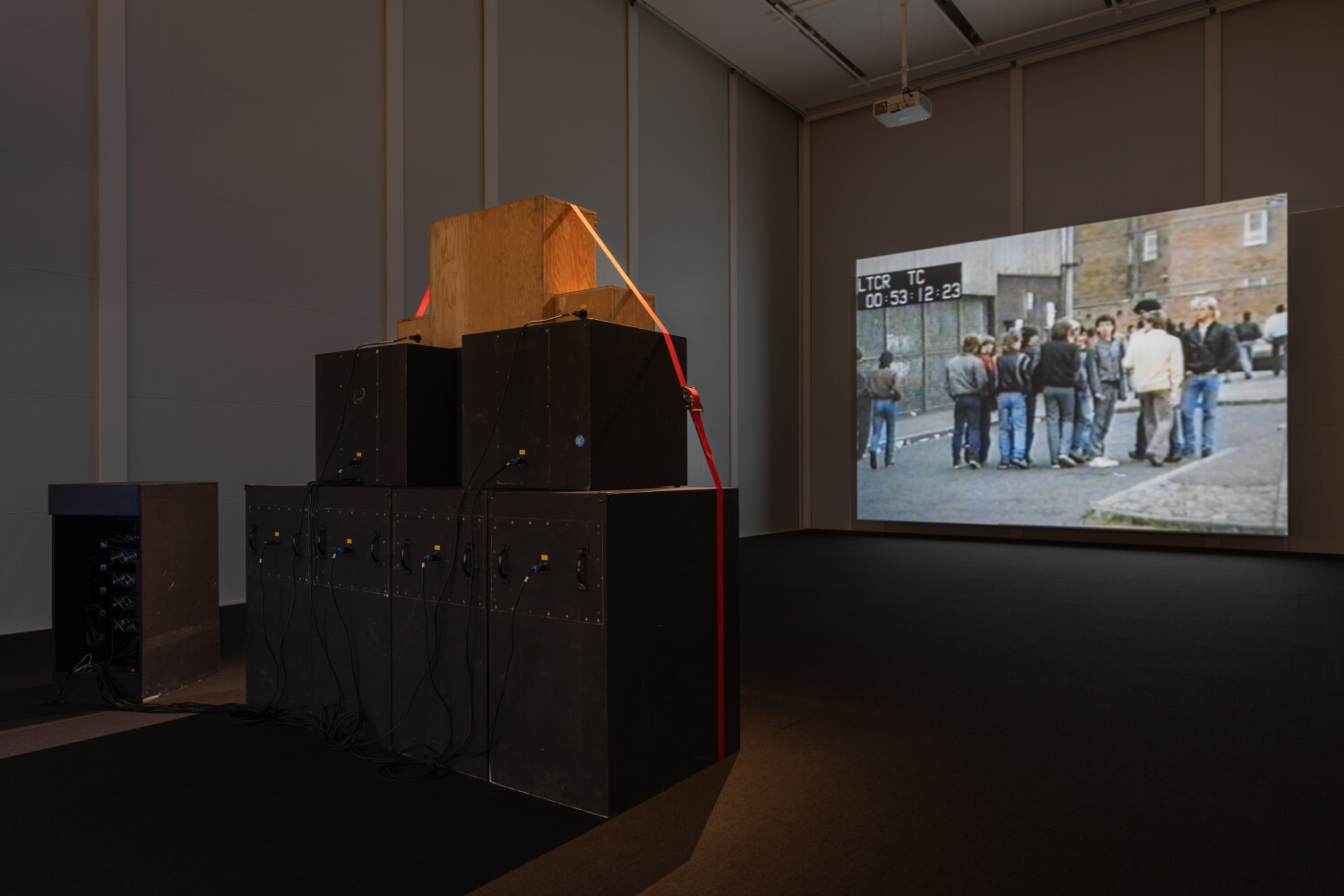MARK LECKEY: FIORUCCI MADE ME HARDCORE FEAT. BIG RED SOUNDSYSTEM
HAPPENINGText: Victor Moreno
In 2008, Mark Leckey won the Turner Prize for his video art film “Industrial Light and Magic,” which led to his work being exhibited at Tate Modern and internationally at institutions such as MoMA and the Guggenheim Museum in New York City, and the Centre Pompidou in Paris, among others. These recordings have become genuine works of art, documenting the history of Britain. A special 10-year anniversary remaster of the original piece is displayed on a huge screen that takes over the entire gallery wall, accompanied by a powerful sound system and a massive inflatable “Felix the Cat” (2013). “I’m a fetishist, I fetishize things, and I’m drawn to these things and I’m obsessed about these things and I need to possess them in some way, because I feel like they are possessing me. I want some kind of reciprocation,” he explains. Therefore, embracing the cartoon character, Leckey makes this specific figure his own: was the first subject to be televised when American channel NBC began testing its equipment in 1928, thus appropriating this pioneer symbol of the digital era.

Courtesy of the artist and Fondation Louis Vuitton, Paris Photo: © Jérémie Souteyrat / Louis Vuitton
The title of the short film refers to the British youth subculture of hooligans who, to avoid looking suspicious to police or intimidate rivals, adopted prestigious sportswear brands like Fiorucci, Ralph Lauren, Ben Sherman, and Burberry. Today, such a compilation could be assembled in weeks by searching YouTube, but Leckey spent years meticulously collecting the material for his film. This installation, composed of a speaker wall and a video, synthesizes two of Mark Leckey’s earlier works. The first, “Fiorucci Made Me Hardcore” (1999), served as a springboard for his career, highlighting his interest in popular culture and his enduring use of montage. At the intersection of rave nostalgia and cultural documentary, British video artist exhibited his nearly fifteen-minute piece, “Fiorucci Made Me Hardcore,” and “SoundSystems” – a gigantic old-school wooden speaker-wall – at the Espace Louis Vuitton atop the Omotesando space in Tokyo as part of the “Hors-les-murs” program. It shows club-going young people moving from disco to the techno raves of the early 1990s, while focusing on the Northern Soul scene – an English epiphenomenon in which young people from the North of England became enamored of the American soul of the 1960s.

Courtesy of the artist and Fondation Louis Vuitton, Paris Photo: © Jérémie Souteyrat / Louis Vuitton
It is fantastic that some of the main luxury fashion houses in the Omotesando area in Tokyo include gallery spaces open to the public free of charge, fostering specific cultural communication. Mark Leckey’s background is rooted in a working-class family near Liverpool. He attended art college but didn’t enjoy it, eventually leaving to learn by doing and becoming self-taught. In 1990, he made his first exhibition alongside British artist Damien Hirst when both were at the early stages of their careers, at New Contemporaries, an art organization for emerging artists in the UK. Later on coined as Young British Artists, a movement created in London by the end of the 80s, a generation of British artists such as Mark Leckey, Damien Hirst, Tracey Emin and Sarah Lucas. He nevertheless nearly vanished from the artistic scene in the 1990s, returning only at the end of the decade.

Courtesy of the artist and Fondation Louis Vuitton, Paris Photo: © Jérémie Souteyrat / Louis Vuitton
New technologies and the information-access revolution have inspired several of his works. His performance “The Long Tail” (2009) was based on the concept developed by British-American author Chris Anderson in 2004, which posits that the vast distribution capabilities of the internet can turn niche markets into profitable ones. Similarly, Leckey’s fascination with human coexistence with consumer objects led him to propose an expanded concept of sculpture — an animist practice that involves communication with industrial artifacts. “Traveling through the history of Britain’s subcultures between the 1970s and 1990s, his work can only truly be appreciated when popular cultures are viewed as noble, worthy of interest and sources of genuine works of art. The video “Fiorucci Made Me Hardcore” (1999), actually marking his return to the art scene with great fanfare, exemplifies his interest in popular cultures and their do-it-yourself approach,” the gallery explains. The speaker wall is a celebration of Bass Culture, a term used by reggae historian Lloyd Bradley in 2000 in a work of the same name. Imported by England’s Jamaican community, this audio equipment, which produces powerful bass frequencies, is the symbol of the parties sought out by mixed-race English youth come nightfall.
The “Hors-les-murs” program is taking place within the Espace Louis Vuitton in Tokyo, Munich, Venice, Beijing, Seoul, and Osaka, which are exclusively devoted to exhibitions of works from collection of the Fondation Louis Vuitton.
Mark Leckey: Fiorucci Made Me Hardcore Feat. Big Red SoundSystem
Date: February 22nd – August 18th, 2024
Hours: 12:00 – 20:00
Place: Espace Louis Vuitton Tokyo
Address: 7F, Louis Vuitton Omotesando, 5-7-5 Jingumae, Shibuya-ku, Tokyo
Tel: +81 (0)3 5766 1094
https://espacelouisvuittontokyo.com
Text: Victor Moreno
Photos: Jérémie Souteyrat / Louis Vuitton. Courtesy of the artist and Fondation Louis Vuitton, Paris





